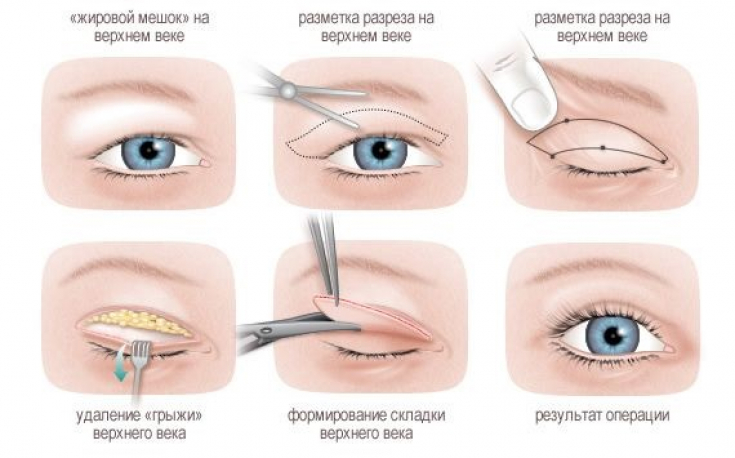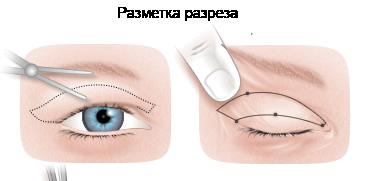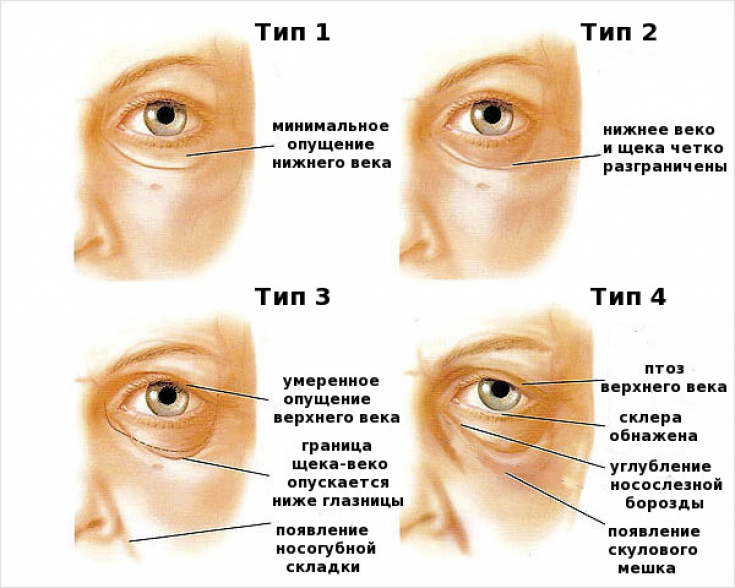Blepharoplasty — surgery to change the shape of the eyelids, the cut of the eyes. This type of surgery involves the excision of excess skin and fatty formations. Indications for blepharoplasty are: overhanging skin of the upper and lower eyelids, "fat bags"; eyelids, drooping of the lower corners of the eyes, incision and shape of the eyes.
The blepharoplasty procedure addresses the functional and cosmetic problems of the periorbital area by removing and/or repositioning excess tissues such as adipose tissue, skin, strengthening the corresponding muscle and tendon tissues located in the area from the eyebrow to the upper cheek.
In the article estet-portal.com you can get acquainted in detail with the key trends in modern correction of the periorbital region from practitioner of aesthetic medicine, plastic and reconstructive surgery Vitaly Orel.
- Periorbital Correction: Minimally Invasive vs. Surgical
- Modern trends in periorbital correction
- Surgical methods for the correction of ptosis of the lower eyelid
Correction of the periorbital region: minimally invasive versus surgical methods
V.O.: Surgical correction, in particular, of the periorbital region is the safest and most effective method of correction in terms of further outcomes, postoperative complications and duration of the effect.
Follow us on Facebook
Conservative, minimally invasive methods of correction of the orbital zone are associated with serious complications, for example, the introduction of fillers based on hyaluronic acid or transplantation of one's own adipose tissue (lipofilling) can lead to the formation of necrosis, hematomas, livedo, ectropion, ptosis of the soft tissues of the supra- and infraorbital region, blindness. The effect of fillers is short-term, requires systematic correction and constant financial costs.
Blepharoptosis can be classified according to the degree of drooping into minimal (1-2 mm), moderate (3-4 mm) and severe (> 4 mm).
In some cases, the cause of the aesthetic problem lies in the ptosis of the soft tissues of the upper 1/3 of the face, and not in the isolated upper eyelid. Only a highly qualified plastic surgeon can distinguish between drooping of the upper third of the face and blepharoptosis (drooping of the upper eyelid), choose a competent method of surgical correction of the main problem, and not the consequences.

In some cases, the cause of the aesthetic problem lies in the ptosis of the soft tissues of the upper 1/3 of the face, and not in the isolated upper eyelid. Only a highly qualified plastic surgeon can distinguish between drooping of the upper third of the face and blepharoptosis (drooping of the upper eyelid), choose a competent method of surgical correction of the main problem, and not of the consequence.
Modern trends in the correction of the periorbital region

V.O.: In modern plastic surgery, 2 main techniques for the correction of lower eyelid ptosis prevail:
1. transconjunctival access removes the contents of the hernial sac of the eyelid without affecting the skin;
Transconjunctival access does not require suturing at the end of the operation.
2. by percutaneous access along the ciliary edge of the lower eyelid, resection of excess skin is performed with the removal of the contents of the hernial sac or its translocation to the area of deficiency of subcutaneous fatty tissue.
Translocation of the contents of the hernial sac is an organ-preserving operation — fundamental trend of modern plastic surgery.
As for upper eyelid surgery, current trends suggest expanding the resection area of the skin flap in order to reduce the likelihood of the “round” phenomenon. eye and suture of the levator to deeper and more stable structures (e.g. tarsal plate or periosteum).
Surgical methods for correcting lower eyelid ptosis
V.O.: In case of insufficient support function of the lower orbit (protrusion of the eyeball in relation to the lower edge of the orbit), an allo- and autograft is used for adequate molar support. For example, resected bone tissue of the hard palate is used as an autograft. At that time, as an allograft — titanium mesh plates, silicone, polyethylene, teflon implants.
What types of blepharoplasty are there: understanding the terms

In addition, canthopexy (elevation of the lateral corners of the eyes) is possible, which allows you to eliminate minimal ectropion. In more severe cases of ectropion, further elimination is possible only with the help of a median SMAS facelift.
Thank you for staying with estet-portal.com. Read other interesting articles in the "Practice" section. You might be interested in Blepharoplasty correction
More useful information on our YouTube channel:







Add a comment